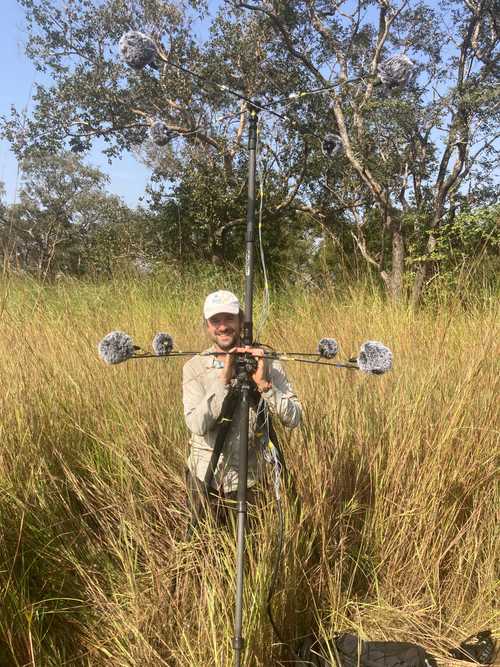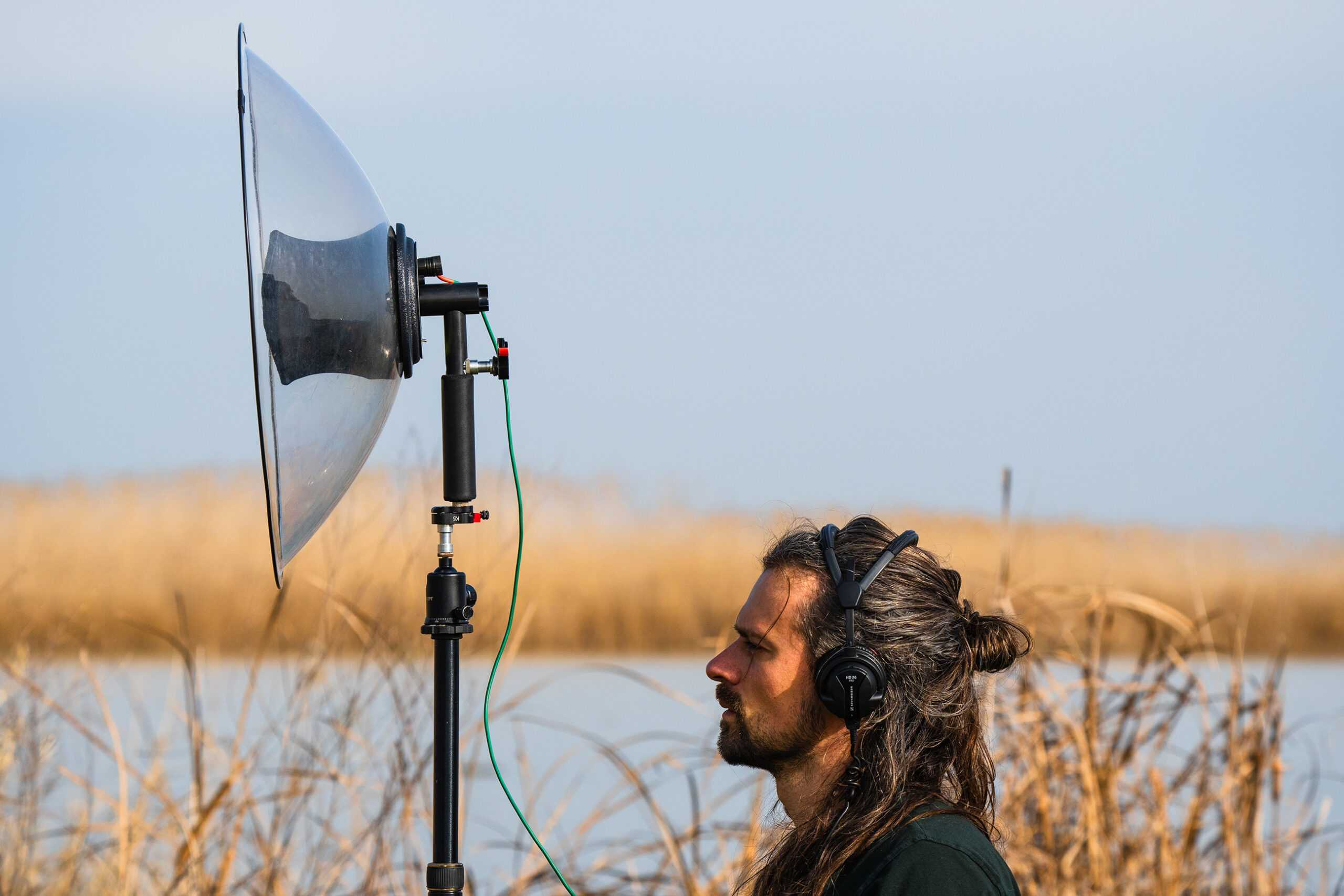
Sounds Across Continents: Sierra Leone, November 2024
Sounds Across Continents continues the previous Sounding Wild project, Wings Across Continents. Where the latter followed the journey of migratory birds across Europe and Africa, this new project dives deeper into the unique vocalisations of migratory birds and their dialects (or regional accents). The question is: are these dialects influenced by African sounds? Do they take some of these sounds back to Europe?
The project explores the East Atlantic Flyway (a migration route spanning the Arctic to southern Africa), focusing on seven specific species: the Common Reed Warbler, Common Nightingale, Common House Martin, Common Tern, Whimbrel, Lesser Kestrel, and Eurasian Golden Oriole. (As the final species isn’t present in West Africa, the focus shifts to the African Golden Oriole there. Orioles are an obsession of mine.)
Last year, I drove with my brother from the UK to Guinea-Bissau in West Africa, documenting bird migrations and habitats along the way. Eight months or so later, I returned to Sierra Leone, further south on the West African coast, to pick up the journey where I left off.
Starting the journey again
In November 2024, I retrieved my car: a trusty Toyota Hilux named Daphne, which had been parked near the airport in Sierra Leone all this time, enduring the rainy season. It was a messy reunion—mold, cockroaches, and even rats had taken over the interior—but after a week of cleaning, she was ready to hit the road. Along with restoring Daphne, I cleaned and tested my audio equipment, preparing it for the journey ahead.
For this mission, I brought a collaborator with me—Bamie Samuel Konica, a talented local songwriter and filmmaker from the WAYout charity, which empowers street youth through creative skills. Together, we set out to find and record the migratory birds I’d been dreaming of hearing again, starting with the Common Reed Warbler.

Challenges in the field
Our first stop was Outamba-Kilimi National Park, where I’d recorded the Common Nightingale during my last visit. I’d learnt about this place thanks to my friend Paul Robinson, an ornithologist and collaborator of the NGO Panverus Project, which takes care of many wildlife-related projects in the area and the park itself.

The park, about 300 kilometres from Freetown, presented logistical challenges: rough roads, long drives, and equipment malfunctions, but we managed to reach it. A wonderful combination of savannah habitat and thicker forest, it’s home to over 700 bird species, 13 primate species, and forest elephants, leopards, pangolins, and hippos.
The first four days in the field were frustrating—we struggled with technical issues, heat, and a lack of bird sightings. Still, I reminded myself to trust the process; things happen if you stick to the plan, and working with wildlife requires patience.
A breakthrough moment
As our exasperation increased, we decided to explore a new area: a wetland habitat known locally as a boli. Walking through its tall grass, I heard a familiar, magical sound. It was a Common Reed Warbler, calling alongside a Gray-headed Bushshrike and a Vinaceous Dove in the background. The mix of these sounds in the African landscape was breathtaking.
This was the recording I had been searching for—a moment where migratory birds blended their voices with the unique ambience of the African continent. I left my recorder running for a few hours, capturing the richness of this soundscape. Hearing these birds in such a different context—usually back home in Italy, but now surrounded by African wildlife—was deeply emotional. It made me think about the immense challenges they face: crossing the Mediterranean, flying over the Sahara, battling habitat loss, and competing with resident birds. Their resilience is incredible.
Sharing stories with communities
One of the key aspects of Sounds Across Continents is sharing what I record with local communities, to explain why I came to visit them.
After recording the Common Reed Warbler, Bamie and I created a short documentary about the migratory birds and their journey. We shared this with villagers using my portable 10.1 loudspeaker system. The response was heartwarming—local people seemed to appreciate learning about these birds and their significance.
This part of the project is critical to me. When I visit a place, I make it a priority to explain my work, engage with local people, and learn about their stories. Through these exchanges, I hope to help bridge the gap between people and nature by showing how birds connect us across continents.
Music inspired by birds
Another dimension of this project is my music. As Axel Wild, I create electronic tracks using bird sounds, allowing them to dictate the rhythm and melody. After sharing our documentary, I played some of my beats for the villagers. The children joined in, singing along and even creating a new beat featuring the sound of a Hadada Ibis. It was a magical moment—proof that music and nature can unite people.
A mission beyond sound
Hearing birds in one continent, which have travelled from another, stirs a deep wonder within me at their journey and how their two homes connect people from both sides of the Mediterranean. Their journeys are a testament to resilience, strength, and connection. Many people—both in Europe and Africa—don’t realise the importance of these birds or the challenges they face. By recording and sharing their sounds, I hope to change that.
Sounds Across Continents is more than just a project—it’s a mission to unite people through sound, storytelling, and music. These birds remind us that we’re all connected, and their voices carry a message that transcends borders.

Featured photo: Axel with ‘the Tarantula’
All photos and recordings courtesy of Axel Drioli
Earth.fm is a completely free streaming service of 1000+ nature sounds from around the world, offering natural soundscapes and guided meditations for people who wish to listen to nature, relax, and become more connected. Launched in 2022, Earth.fm is a non-profit and a 1% for the Planet Environmental Partner.
Check out our recordings of nature ambience from sound recordists and artists spanning the globe, our thematic playlists of immersive soundscapes and our Wind Is the Original Radio podcast.
You can join the Earth.fm family by signing up for our newsletter of weekly inspiration for your precious ears, or become a member to enjoy the extra Earth.fm features and goodies and support us on our mission.
Subscription fees contribute to growing our library of authentic nature sounds, research into topics like noise pollution and the connection between nature and mental wellbeing, as well as funding grants that support emerging nature sound recordists from underprivileged communities.

